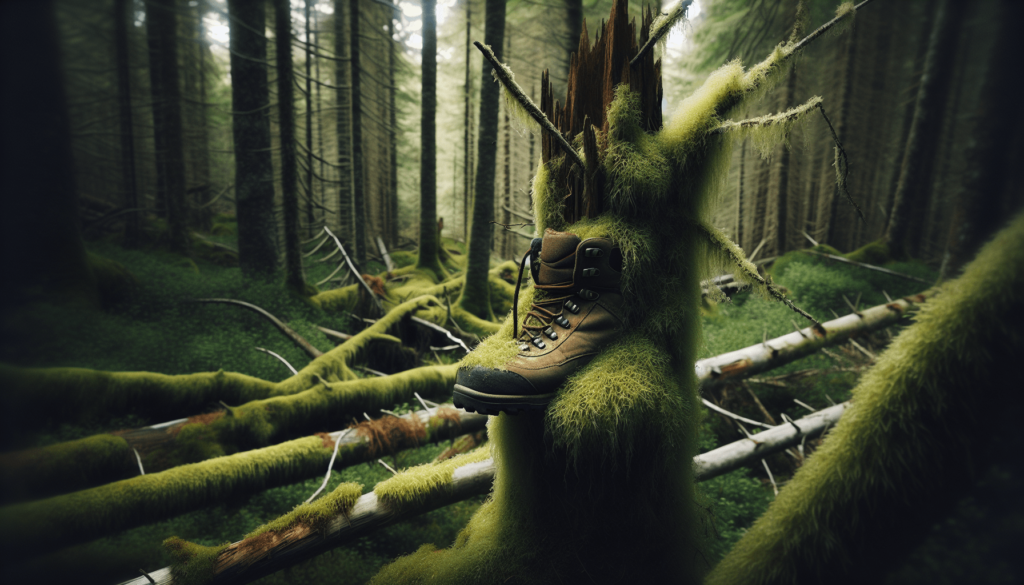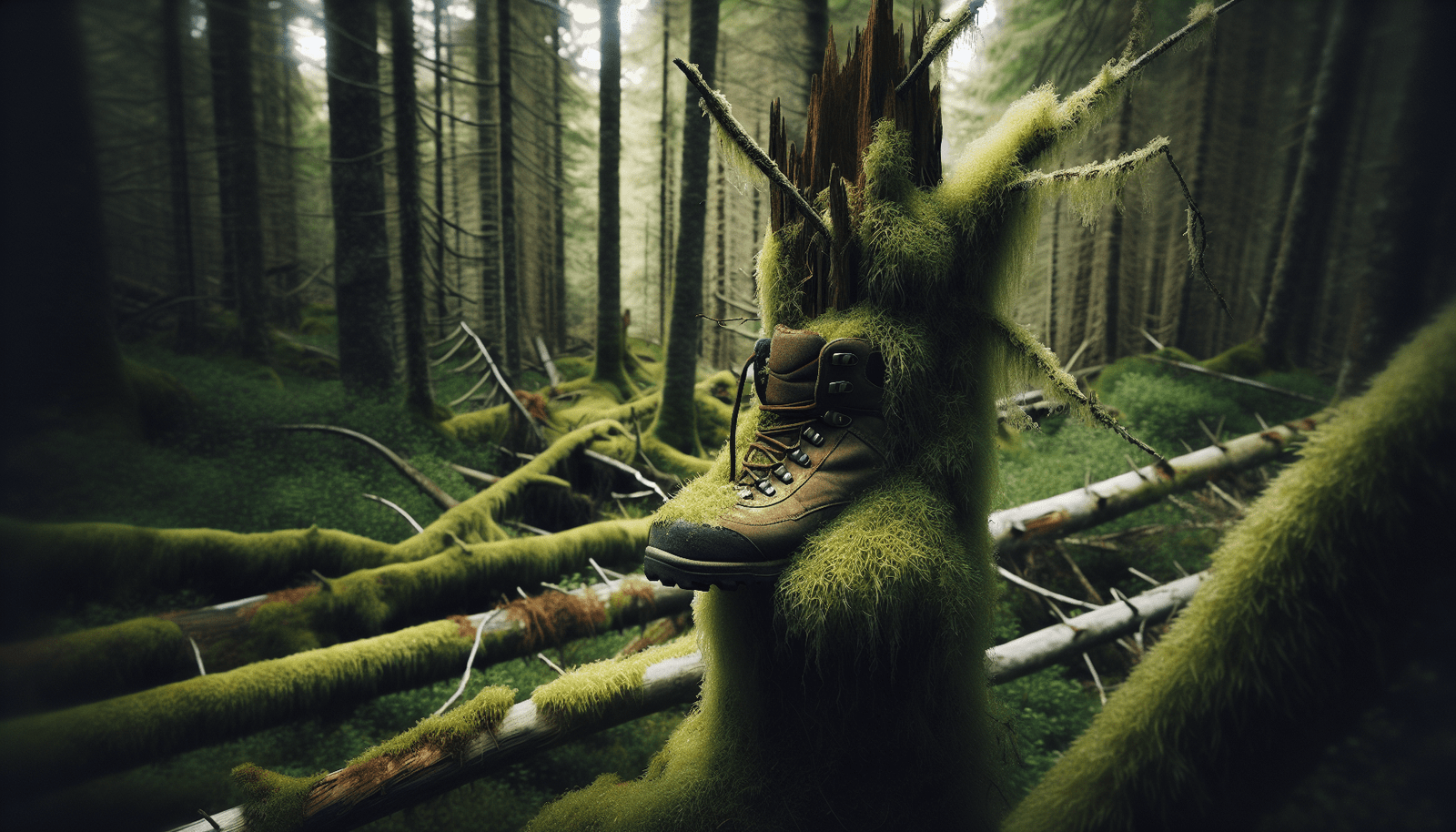Are you an adventurous soul who loves exploring the great outdoors? Or perhaps you simply want to be prepared for any situation life throws at you. No matter the reason, it is crucial to equip yourself with wilderness survival skills. In my blog, “The Survivalist Handbook,” I am committed to providing you with all the knowledge and techniques necessary to thrive in any wilderness environment. With a comprehensive collection of articles in my “Wilderness Survival” category, you will learn essential skills to handle specific threats and scenarios. So get ready to master the wilds and empower yourself with the knowledge to overcome any obstacles that come your way. Today, let’s delve into the topic of “Lost and Alone: Wilderness Survival When You’re Separated.”

Finding Your Bearings
Assessing your surroundings
When you find yourself lost in the wilderness, it is crucial to take a moment to assess your surroundings. Look for any distinguishing features or landmarks that can help you orient yourself. Pay attention to the terrain, vegetation, and any nearby bodies of water. This initial assessment will provide you with a basic understanding of your surroundings, which is essential for effective navigation.
Using landmarks to navigate
Landmarks can be your best friend when it comes to navigation in the wilderness. Look for distinct features such as mountains, rivers, or rock formations that can serve as reference points. By keeping these landmarks in mind and monitoring their position as you move, you can maintain a general sense of direction and avoid becoming disoriented.
Using a compass
A compass is a valuable tool for wilderness navigation. It can provide you with a precise direction, making it easier to navigate through unfamiliar terrain. Learn how to use a compass properly, including how to read a map and orient yourself using the compass. With a compass in hand, you can confidently navigate through the wilderness, even when there are no visible landmarks.
Navigating at night
Navigating in the dark can be challenging, but with the right techniques, you can safely find your way even without the help of daylight. Familiarize yourself with the night sky and learn how to identify the North Star. Additionally, consider using a headlamp or flashlight to illuminate your immediate surroundings. By staying calm and using these techniques, you can successfully navigate through the wilderness at night.
Locating Water Sources
Understanding the importance of water
Water is essential for survival, and knowing how to locate and access water sources is critical. Understand the importance of staying hydrated and the signs of dehydration. In the wilderness, water may be scarce, so it is crucial to conserve and ration your water supply. By prioritizing finding clean water sources, you can ensure your survival in the wilderness.
Finding natural water sources
In the wilderness, natural water sources such as rivers, streams, and lakes can provide you with the water you need to survive. Learn how to locate and assess these water sources for safety and suitability. Look for clear flowing water, and avoid stagnant pools or areas near animal habitats. By being able to identify and find natural water sources, you can keep yourself hydrated and healthy in the wilderness.
Purifying water for safe consumption
Drinking untreated water in the wilderness can lead to illness or even death. That’s why it’s crucial to learn how to purify water for safe consumption. There are several methods for water purification, including boiling, using water filters, and using chemical tablets. Familiarize yourself with these techniques and always prioritize the safety of the water you consume.
Collecting rainwater
When you’re in the wilderness, rain can be a valuable source of water. Learn how to collect rainwater effectively by using natural catchment areas such as plants, leaves, or even a makeshift tarp. By harnessing the power of rainwater, you can ensure a steady supply of clean drinking water.
Building Shelter
Assessing available resources for shelter
Finding or creating shelter is vital in a survival situation, as it protects you from the elements and provides a sense of security. Assess your surroundings for available resources that can be used to build a shelter. Look for natural materials such as branches, leaves, and rocks that can be utilized in constructing a sturdy and protective shelter.
Creating a simple makeshift shelter
In an emergency wilderness situation, a simple makeshift shelter can be quickly assembled using minimal resources. Learn basic shelter-building techniques such as lean-tos or tarp shelters. These simple structures can provide protection from rain, wind, and cold temperatures, helping you stay safe and comfortable during your time in the wilderness.
Building a debris hut
A debris hut is a more advanced shelter-building technique that provides greater protection and insulation. With this method, you gather an assortment of natural materials, such as branches, leaves, and moss, to create a shelter that can trap body heat and shield you from the elements. Learn how to construct a debris hut and practice building one before you find yourself in a survival situation.
Constructing a lean-to shelter
A lean-to shelter is another effective and relatively simple shelter option. It involves propping a large branch or tree against a solid structure, such as a rock or tree trunk, to create a slanted roof. Cover the roof with branches, leaves, or a tarp to provide protection from rain or snow. This shelter can be quickly assembled and provides good ventilation while keeping you dry.
Starting a Fire
Understanding the significance of fire
Fire is not only a source of warmth but also a crucial tool for survival in the wilderness. It can provide light, purify water, cook food, and keep dangerous animals at bay. Understand the significance of fire and the many ways it can be utilized to improve your chances of survival.
Gathering materials for fire-making
Before you can start a fire, you need to gather the necessary materials. Look for dry and flammable natural resources, such as twigs, leaves, and bark. Collect firewood in different sizes, from tinder to kindling to larger logs, to sustain and control your fire. By being prepared and gathering adequate fire-making materials, you can increase your chances of starting a successful fire.
Using different fire-starting techniques
There are various methods for starting a fire in the wilderness. Learn and practice different fire-starting techniques, such as using a lighter, matches, or a fire starter kit. Additionally, explore primitive methods like friction-based techniques such as the bow drill or hand drill. By mastering multiple fire-starting techniques, you can adapt to different situations and increase your chances of success.
Maintaining and extinguishing a fire
Once you have successfully started a fire, it is essential to know how to maintain and control it. Regularly add firewood to sustain the flames, but be mindful of using the right size of logs to prevent smothering the fire. When you’re ready to extinguish the fire, make sure to fully douse it with water and ensure it is completely out before leaving the area. Responsible fire management is crucial to prevent wildfires and protect the environment.

Finding Food
Identifying edible plants
In a survival situation, finding food is crucial for sustenance. Familiarize yourself with edible plants in your area and learn to identify them correctly. Look for edible leaves, fruits, seeds, and roots. Be cautious and avoid plants that you are unsure about or that have toxic look-alikes. By expanding your knowledge of edible plants, you can supplement your diet and increase your chances of survival.
Trapping small game
Trapping is an effective method for procuring food in the wilderness. Learn different types of traps, such as snare traps, deadfall traps, and pitfall traps. These traps can capture small animals for sustenance. It is essential to learn proper trapping techniques while respecting ethical guidelines for hunting and conservation.
Fishing techniques
If you are near a water source, fishing can provide a valuable food source. Learn basic fishing techniques such as line fishing, net fishing, or improvised fishing methods using natural materials. Familiarize yourself with local fish species and their habitats to increase your chances of a successful catch. Fishing can be a reliable and sustainable food source in the wilderness.
Preparing and cooking wild food
Once you have procured food from the wilderness, it’s important to prepare and cook it properly. Learn how to clean, gut, and cook wild game or fish. Make sure to cook your food thoroughly to kill any harmful bacteria or parasites. By knowing how to handle and cook wild food, you can ensure safe consumption and maximize its nutritional value.
Signaling for Help
Using visual signals
When you’re lost in the wilderness, it’s crucial to attract attention and signal for help. Visual signals can be an effective way to catch the attention of potential rescuers. Learn common distress signals such as using bright-colored clothing or reflective materials, creating large SOS signs on the ground, or using mirrors to reflect sunlight. By using visual signals strategically, you can increase your chances of being noticed and rescued.
Creating and using an emergency whistle
An emergency whistle is a compact and effective signaling device that can carry your distress call over long distances. Learn how to use an emergency whistle properly and always keep it accessible. The loud and distinctive sound can alert others to your presence and expedite rescue efforts.
Building signal fires
Signal fires are a traditional method of attracting attention in the wilderness. Learn how to build a signal fire by using easily combustible materials such as dry leaves or grass. Create dense smoke by adding green vegetation to the fire. Keep the fire burning consistently, and make sure to build it in an open area where it can be seen from a distance. Mastering the art of building signal fires can greatly increase your chances of being rescued.
Making improvised distress signals
In addition to visual and auditory signals, you can use your creativity to craft improvised distress signals. These can include using rocks or sticks to create large visible arrows pointing towards your location or writing distress messages on natural surfaces with attention-grabbing materials. By using improvised distress signals, you can diversify your methods of attracting attention and increase your chances of being found.
Dealing with Wildlife
Understanding animal behavior
When you’re in the wilderness, it’s crucial to understand the behavior of the local wildlife to avoid dangerous encounters. Familiarize yourself with the habits, habitats, and warning signs of the animals in the area. This knowledge will help you identify potential threats and take appropriate precautions.
Avoiding dangerous encounters
To minimize the risk of dangerous wildlife encounters, it’s essential to practice proper wilderness etiquette. Avoid surprising or provoking animals by making noise to alert them of your presence. Store food securely and away from your sleeping area to deter animals from approaching. Keeping a safe distance and respecting the boundaries of wildlife will significantly reduce the chances of a dangerous encounter.
Handling encounters with predators
In the rare event of an encounter with a predator, it’s important to stay calm and act cautiously. Avoid direct eye contact and slowly back away from the animal. Make yourself appear larger by raising your arms or opening your jacket. If a predatory animal attacks, fight back using any available objects or tools. Knowing how to respond in these situations can greatly increase your chances of survival.
Protecting yourself from insect bites and stings
Insects can be an annoyance and, in some cases, pose health risks. Protect yourself from insect bites and stings by wearing long sleeves, long pants, and applying insect repellent. Use mosquito nets or shelters to create a bug-free sleeping area. Be familiar with the signs and symptoms of insect-borne diseases to seek medical attention if necessary.
Maintaining Mental and Emotional Well-being
Staying positive in challenging situations
Maintaining a positive mindset is crucial for wilderness survival. In challenging situations, it’s easy to become overwhelmed or discouraged. Focus on the accomplishments and progress you’ve made, and remind yourself that you have the skills and knowledge to survive. Find motivation in the beauty and serenity of nature, and stay optimistic about your situation.
Practicing mindfulness and meditation
Mindfulness and meditation can help you stay grounded and centered, even in the midst of a survival situation. Take the time to connect with nature, observe your surroundings, and practice deep breathing and relaxation techniques. Incorporate mindfulness and meditation into your daily routine to reduce stress and promote mental well-being.
Engaging in activities to boost morale
During a prolonged survival situation, it’s important to find activities that boost morale and provide a sense of normalcy. Engage in hobbies such as journaling, sketching, or playing a musical instrument if you have one. These activities can help distract from the challenges of your situation and provide a much-needed mental break.
Building a support system
Even if you’re alone in the wilderness, it’s crucial to build a support system. Maintain communication with loved ones or fellow adventurers through a satellite phone or emergency communication device if available. Share your experiences, challenges, and triumphs with others, as their support and encouragement can greatly boost your morale and mental well-being.
First Aid and Medical Care
Assessing and treating common wilderness injuries
In the wilderness, injuries can occur, ranging from minor cuts and bruises to more severe conditions. Learn basic first aid skills, such as cleaning and dressing wounds, setting broken bones, and treating burns or sprains. Carry a first aid kit and familiarize yourself with its contents. By being prepared and knowing how to assess and treat common wilderness injuries, you can prevent complications and promote healing.
Creating a first aid kit
A well-equipped first aid kit is essential for wilderness survival. Include items such as bandages, antiseptic wipes, tweezers, a splint, insect repellent, pain relievers, and any necessary personal medications. Customize your first aid kit based on your needs and ensure it is easily accessible. Regularly check and restock your kit to ensure its readiness.
Handling medical emergencies
In a medical emergency, it’s crucial to stay calm and take immediate action. Assess the situation and provide necessary first aid while waiting for professional help. Know how to perform CPR, deal with severe bleeding, and manage allergic reactions. The ability to handle medical emergencies effectively can save lives and improve outcomes.
Knowing when and how to seek rescue
In some situations, seeking rescue becomes a necessity. Familiarize yourself with the proper channels for alerting authorities or requesting rescue, such as using emergency communication devices or leaving visible distress signals. Understand the factors that might trigger a rescue operation, such as a predetermined duration of time without contact or a missed check-in. Knowing when and how to seek rescue can be a crucial decision in a survival situation.
Rescue and Survival Strategies
Preparing for rescue
While waiting for rescue, it’s important to take proactive measures to improve your chances of being found. Stay in a visible location, make regular noise or call for help, and utilize all available signaling devices. Signal fires, emergency whistles, and improvised signs can all attract attention and expedite rescue efforts.
Creating and maintaining signaling devices
Signal devices play a vital role in increasing your visibility to potential rescuers. Ensure you have visible and auditive signaling devices such as brightly colored clothing, reflective materials, mirrors, and an emergency whistle. Regularly check and maintain these devices to ensure functionality.
Building a makeshift raft or shelter for water rescue
If you find yourself near a body of water and rescue seems unlikely by land, constructing a makeshift raft can improve your chances of being rescued. Use available materials such as logs or debris to build a floating platform. Additionally, building a shelter near or on the shore can provide a refuge while waiting for rescue.
Developing a plan for long-term survival
In some survival situations, long-term survival becomes a possibility. Develop a plan for long-term survival that includes finding sustainable water sources, procuring food, and building a more permanent shelter. Prioritize skills such as foraging, hunting, and water purification. By thinking ahead and preparing for an extended stay in the wilderness, you can improve your chances of survival.
Remember, these skills and strategies are not something to be taken lightly or underestimated. Mastery of wilderness survival takes time, practice, and preparation. Equip yourself with the knowledge and skills needed to thrive in the wilderness, and always prioritize your safety. With the right mindset and adequate preparation, you can confidently face any survival situation and emerge stronger. Stay safe and enjoy the wilds!

